本文
Aikawa Gold and Silver Mine : Edo period : Sado City, Niigata Pref. Japan
- Home
- Gold and Silver in Sado
- Nishimikawa Placer Gold Mine
- Tsurushi Silver Mine
- Aikawa Gold and Silver Mine : Edo period
- Aikawa Gold and Silver Mine : From Meiji era onward
Full-scale development of Aikawa Gold and Silver Mine began in 1601, when Sado was placed under the direct control of the Tokugawa Shogunate. Mine managers called Yamashi were brought to Sado from Iwami, Ikuno, and Kai mines, and cutting-edge techniques in surveying, mining (tunnel mining), and smelting (cupellation, sulfur cementation, salt cementation ) were introduced. These techniques led the Aikawa Gold and Silver Mine to one of the most leading mines in the production of gold in the world. Later, techniques used in Sado would spread all over the country.
"Doyu-no-warito", a hand-dug outcrop
A large-scale opening on top of the mountain was created as a result of surface mining in the Doyu vein. The distinctive wedge-shaped cutout on the top of the mountain is the symbol of the Sado Gold and Silver Mine. Many tunnels still remain and their mouths can be viewed from outside.The lower part was worked in the late 19th century using explosives.
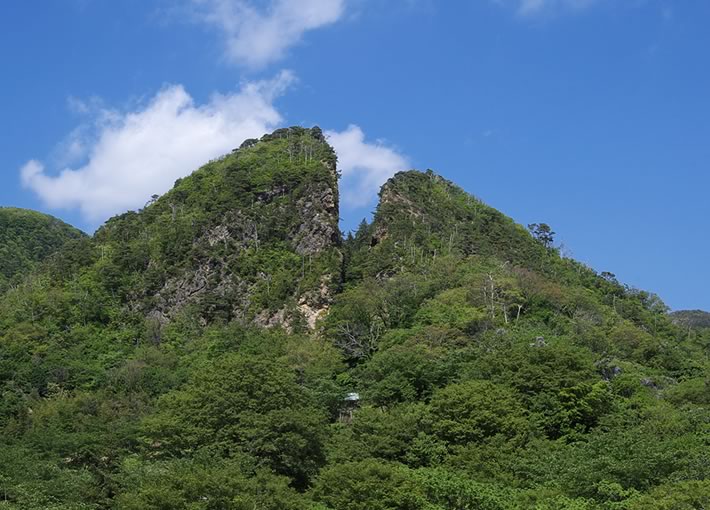
Doyu-no-warito opencut, Photo by © Hoichi Nishiyama
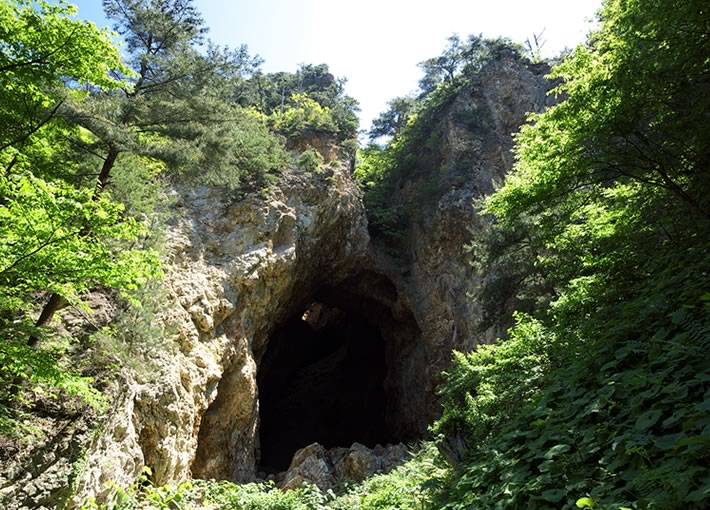
Lower part of Doyu-no-warito opencut
Kami-Aikawa area, early mining town
A town of mine workers and their families was situated at the foot of mines. During the early development of the gold and silver mine, the community was located in a mountain area next to Tsurushi Silver Mine. Mining to smelting was done by the community. It is said that there were 1,000 houses during its prime in the 17th century.
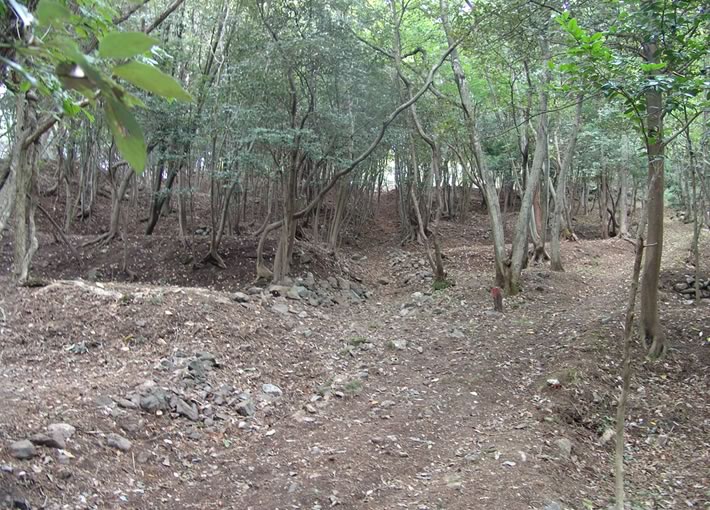
Remains of paths and terraced areas in Kami-Aikawa Area
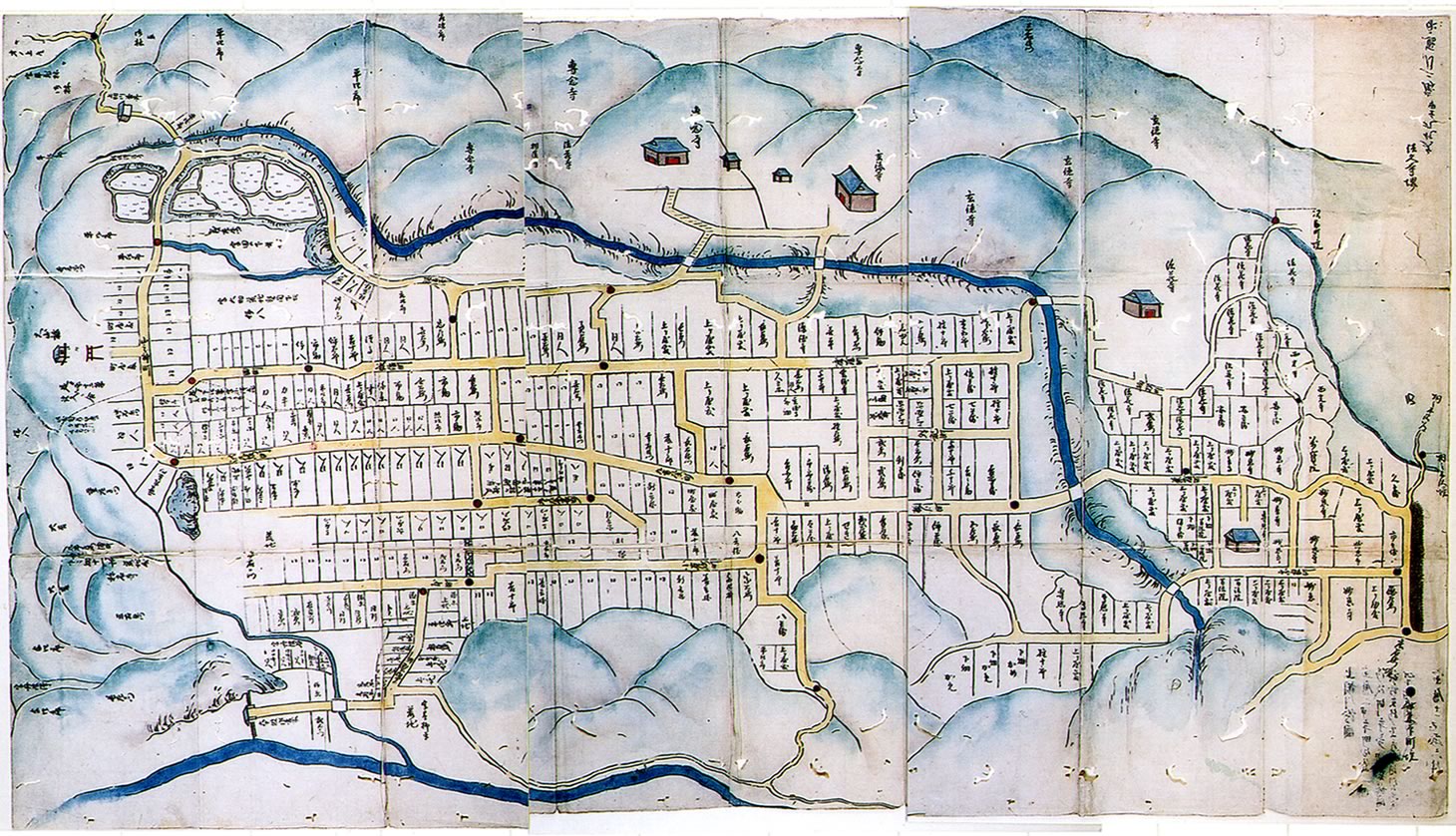
Lot plan of Kami-Aikawa Area,1752,modified 1812 (Property of Aikawa Folk Museum)
Minamizawa Drainage Tunnel
The Minamizawa Drainage Tunnel was dug only by chisels and hammers so that it had a one-degree inclination pitch from the mine to the sea. They started digging from six points simultaneously in order to shorten the work period. The drainage tunnel was completed in six years with only a slight difference of at most one meter from the original plan for the 922-meter tunnel.
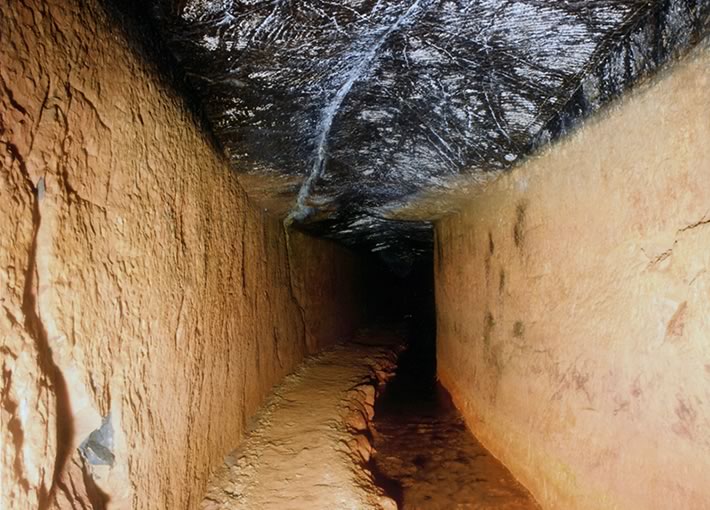
Minamizawa Drainage Tunnel constructed in the 1690s
Sodayu Mabu tunnel
Sodayu Mine was developed during the early stage of mining in Aikawa. It is now open to the public as a museum.
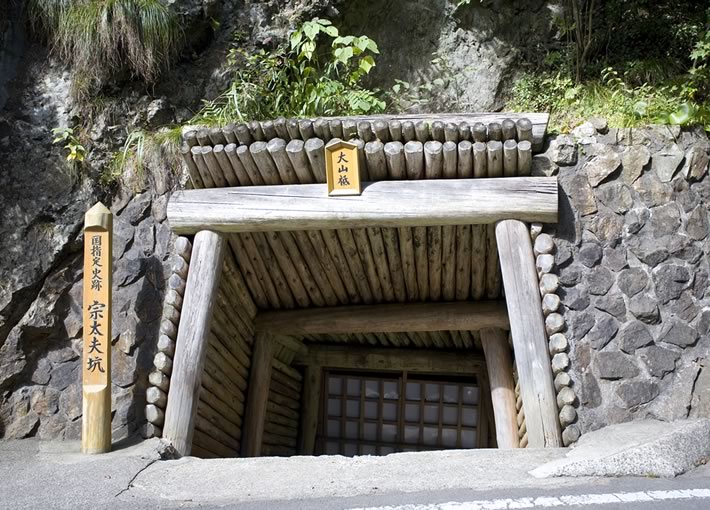
Entrance of Sodayu Mabu tunnel
Sado Magistrate's Office
The administration headquarters of the gold mine was originally located in Tsurushi. It was relocated to the present location from 1603 to 1604 by administrative head Okubo Nagayasu. Unlike other magistrate offices across the country, Sado's office had mining business facilities including storage houses for gold and silver, fuel, timber and lead rather than just rice.
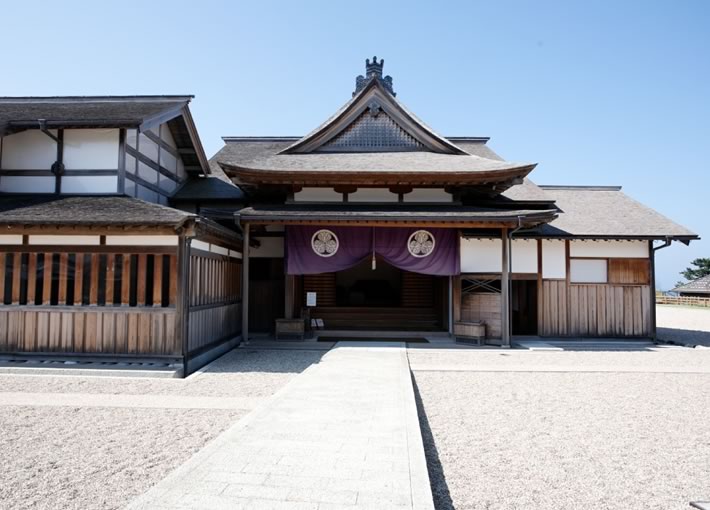
Sado Magistrate's Office (rebuilt)
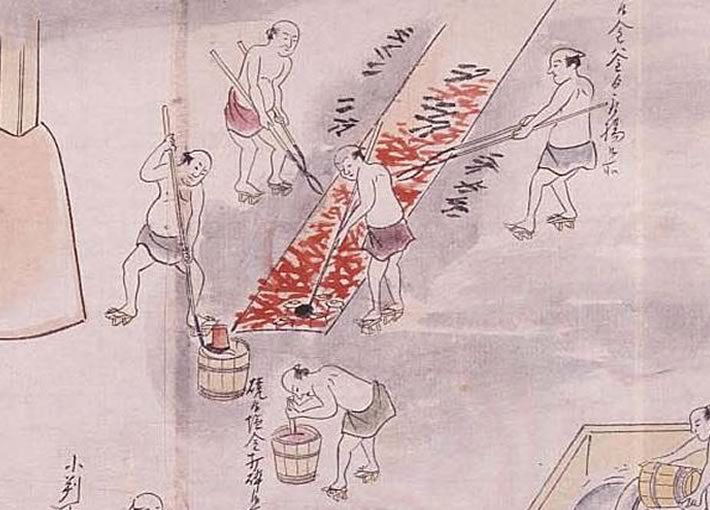
Long smelting furnace for cementation process,Ginzan Seriba Kasegikata Shozu,Owned by Sado City Board of Education
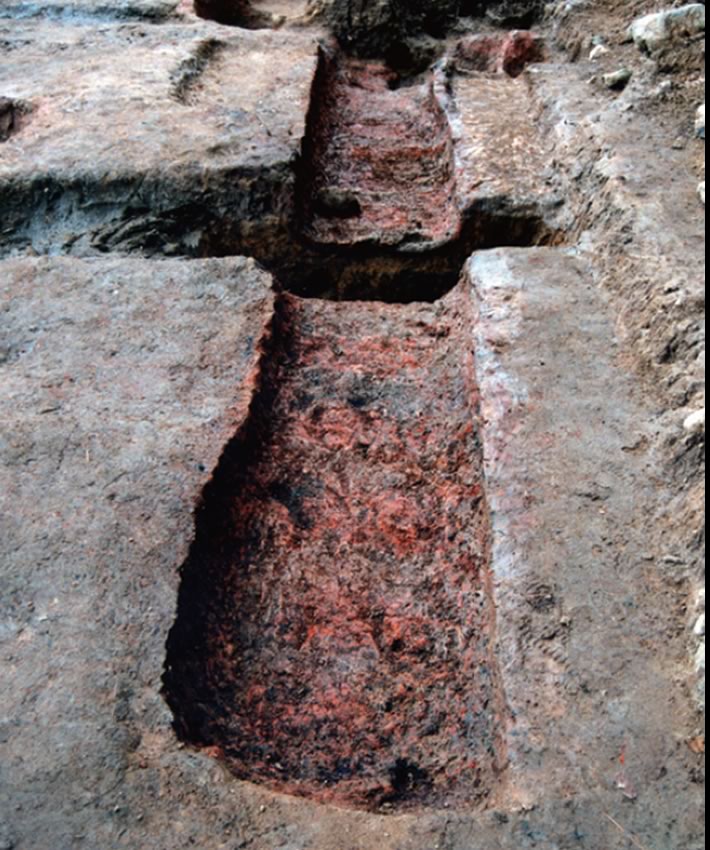
Long smelting furnace excavated at Sado Magistrate's Office
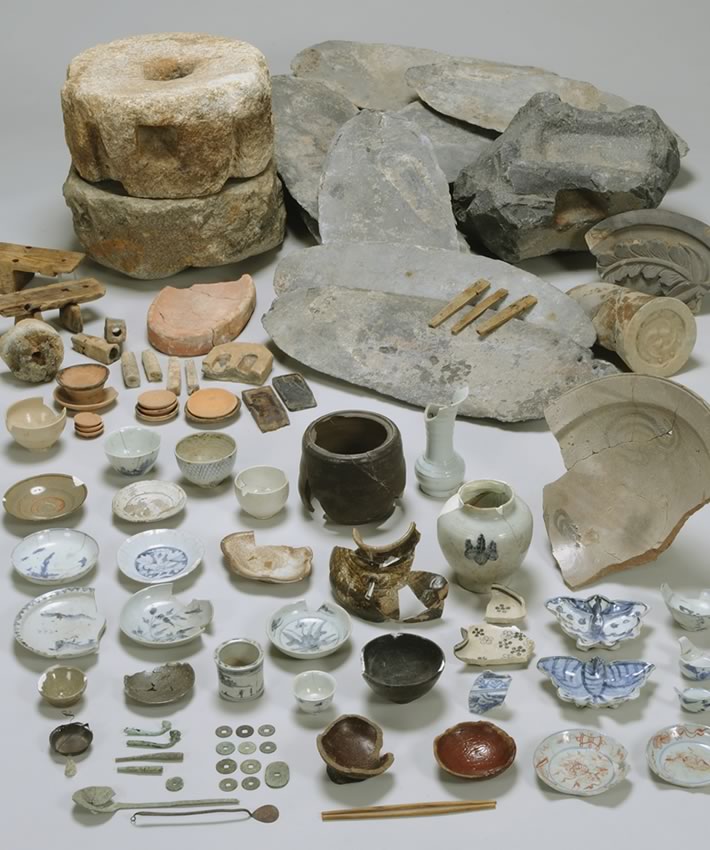
Artifacts at Sado Magistrate's Office(National important cultural property), Photo by © Tadahiro Ogawa
The remains of Fukiage Quarry
The sites were quarries where stone materials were quarried to supply plenty of stone mills (upper parts), pieces of stone walls and other applications to Aikawa Gold and Silver Mine and the urban district of Aikawa.
The research showed that almost every section of the area had wedge quarry holes, traces of such holes and chisel marks, typical for quarry remains.
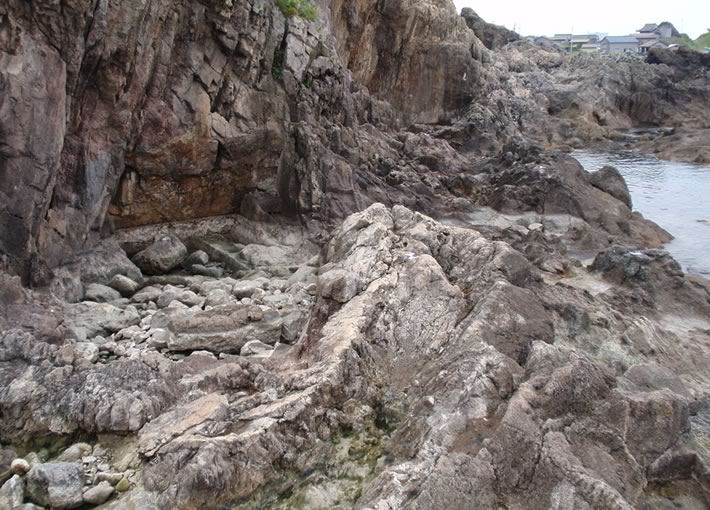
Surviving wedged holes, quarrying spot at Fukiage Quarry
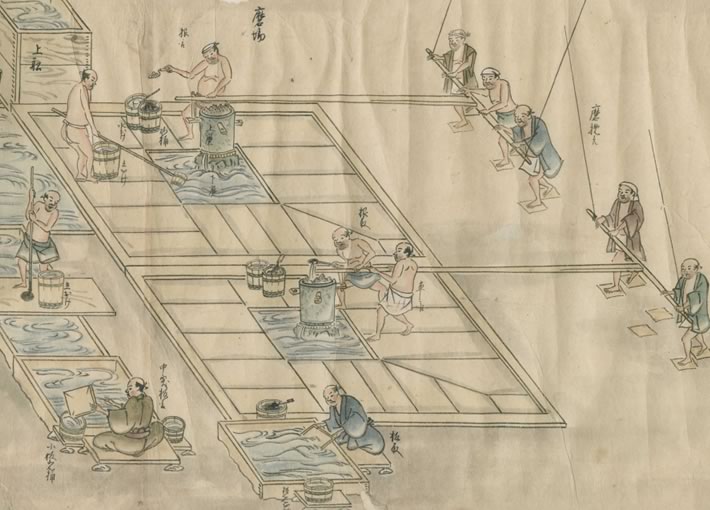
Ore crushing with stone mills in Sado no kuni kanahori no maki (Property of Aikawa Folk Museum
Kyomachi-Dori Street
This area was a business quarter that stretched along the street. During the Edo period, there were specialty shops of Nishijin-ori, a traditional artistic silk fabric originated in Kyoto, in the street, and the street was named after this.
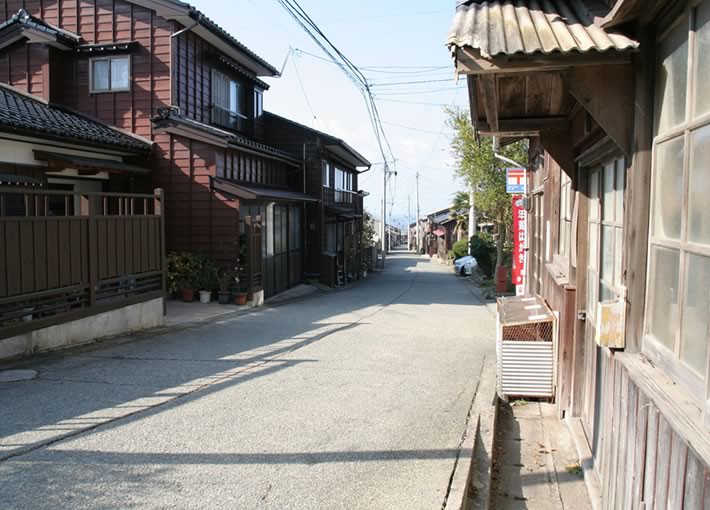
Kyomachi-dori street remaining vestiges of mining town



